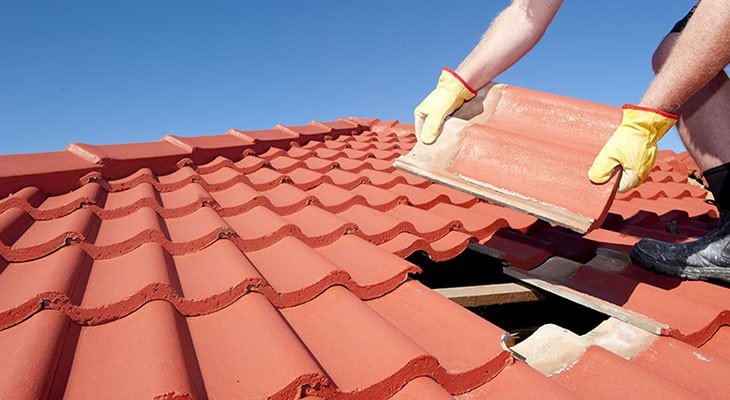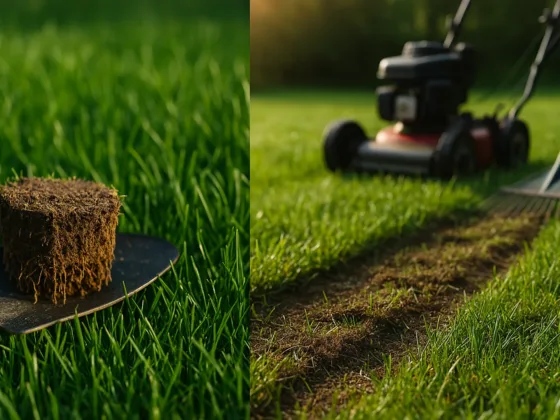Table of Contents Show
You have a lot of choices when you’re getting a new roof installed. From traditional asphalt shingles to specialty metal and stone roofing, the sky’s the limit when finding the best new roof for your needs and your home’s curb appeal.

There are a lot of factors to consider—price, weight, appearance, upkeep, and longevity are all important variables that impact the best choice for your specific home and needs.
What to Consider When Choosing a New Roofing Material
What Is Your Budget?
Your budget is one of the first factors to consider when choosing the right roofing material. If you have a large budget, you can consider styles like metal, tile, and stone.
If your budget is more meager, you may need to go with more cost-friendly options like asphalt shingles. That being said, the upfront price may not be the best way to determine whether a roof is out of your budget.
Generally, the more expensive the roof, the longer it should last. For example, asphalt shingle roofs are expected to last an average of 20 years, while stone and metal roofing can last 100 years or more.
Stone and metal roofing do cost more to install, but it is less expensive over a lifetime than the cost of installing multiple asphalt roofs.
So consider the overall cost and value along with the cost of upkeep, replacement, repair, and other factors when considering how a specific type of roofing material works with your budget.
How Long Do You Want Your New Roof to Last?
Long-lasting roofing like metal, stone, and tile can last 100 years or more with good care. Asphalt roofing lasts between 15 and 30 years, depending on the product and installation methods.
If you’re putting a roof on your forever home, you may want to consider a more permanent, long-lasting roofing material.
If you’re putting a new roof on a home you don’t intend to own for long or a home that isn’t worth as much, a shorter-lived roof may suffice.
Read Also:
What Type of Weather Does Your Region Get, And How Will Different Roofing Stand Up to Those Conditions?
If you live in an area with harsh winters, strong winds, heavy rains, hail, or punishing sun, choose a roof that’s known to take more punishment.
Asphalt shingles are prone to damage from wind and hail, metal roofs can better shed heavy snow, and stone and tile roofs may be more fire-resistant.
Thinking carefully about specific weather conditions in your area can help you choose the roof that will last the longest, giving you a better value.
What Style Is Your Home?
Homes that are modern, traditional, Spanish-style, or Craftsman all have certain roof materials that look better or more complementary.
While any type of home can have any type of roof, if you’re going for a cohesive look, think about what each style of roofing material would bring to your home and how it would change the appearance.
Good roofing contractors can help you choose the best material to complement your home. If you need help choosing a roof, you can find quality roofing contractors on The Prime Buyer’s Report.
What Is the Pitch and Slope of Your Roof?
Some roofing materials, like synthetic roofing, work best on flat or low-pitch roofing. Other materials fit very sloped roofs best.
Look at examples of homes with roofs like yours to see what looks best to you, and talk with your roofer to see what they’d recommend for your specific home.
What Special Features Do You Want in A New Roof?
If you want a home that’s more energy-efficient, you may choose energy-efficient asphalt shingles, concrete tile, light-colored roofing, or other materials that keep your home cooler under the summer sun.
If you’re looking for recyclable options, wood shingles, stone, and metal may be your best options. Stone, slate, and clay tiles can be reused after they’re done serving as roofing materials.
If you’re hoping for low-maintenance roofing or fire-resistant roof materials, there are options for those, too. Think about your dream roof and decide what features it has; then match your wish list items to available materials.
Types of Popular Roofing Materials Available
| Roofing Material | Pros | Cons |
| Asphalt shingles | · Many styles and color choices · Affordable · Easy to replace and repair · Energy-efficient options · Can be fire-resistant | · Shorter lifespan · Not much insulation value · Not sustainable or eco-friendly |
| Organic shingles | · Same Pros as asphalt shingles · Made of wood and other organic materials · Maybe easier to recycle and more eco-friendly | · Shorter lifespan · Not much insulation value
|
| Fiberglass shingles | · Same Pros as asphalt shingles · Very sturdy and hardy against weather | · Shorter lifespan · Not much insulation value · Not sustainable or eco-friendly |
| Wood shingles/wood shakes | · Many options for wood type and color · Longer life than asphalt shingles · Can be treated for fire resistance · Recyclable · Often made from recycled materials, fallen trees, or deadwood | · Can grow moss and algae · Will stain more easily · Must be treated for fire resistance · May is not legal in areas with high fire danger |
| Concrete tile | · Long life—up to 50 years · Resistant to fire, insects, and pests · Many color, texture, and style options · Recyclable · Light-colored tiles reflect sunlight and increase energy efficiency | · Some styles are lighter than others, but all are heavier than shingles, so they may require sturdier roof framing · Breakable if walked on or if branches fall · Tile repairs can be hard since tiles are fragile and may break during repairs |
| Terracotta tile | · Same Pros as concrete tile | · Same Cons as concrete tile · Expensive to source and install |
| Stone and slate | · Beautiful · Durable and long-lasting · Low-maintenance · All-natural product · Recyclable and reusable | · Very heavy; existing homes may require added framing · Requires specialized installation so moisture problems don’t occur · Breakable when walked on or if heavy limbs drop on it |
| Metal | · Long-lasting—50 to 100 years · Very durable against weather, pests, and fire · Most is made of recycled materials and can be recycled · Meets building codes for most jurisdictions | · Expensive (especially copper and specialty metals) · Metal can dent · Repairs can be more expensive than shingles · Standing seams must be installed correctly or they may need to be repaired or reinstalled |
| Synthetic roofing | · Long-lasting · Long warranties · Can be made from rubber, plastic, clay, asphalt, or other materials and stamped or pressed to look like luxury roofing · A good option for flat or low-pitch roofs · High energy efficiency ratings · Can be fire-resistant | · Some styles of the roof may not be a good fit for synthetic roofing · Not every roofer is qualified to install it · Newer on the market, so some drawbacks may not be known |
Other Considerations for Your New Roof Installation
No matter what kind of roofing material you choose, you’ll likely need flashing installed around window frames, siding areas, chimneys, vents, and other areas where the roof butts up against an adjacent surface.
Flashing is generally made of metal strips, often aluminum or copper, and it’s installed as long strips along surfaces and in roof valleys.
Your roofing contractor should install flashing that works well with the roofing material you’ve chosen, whether it is hidden or contrasting to stand out and add visual interest.
Proper ventilation is also important; roofs can fail when heat and moisture build-up in the attic area or crawlspace under the roof.
Without proper ventilation, homes can lose energy efficiency, attics can become hot and moist, mold and mildew can grow, rafters and roof sheathing can rot or deteriorate, shingles can buckle, and insulation can be rendered useless.
Your roofing contractor should install roof vents, attic fans, insulation on the attic floor, vapor blocking membranes, and other features as needed for your home’s unique construction and climate.
The weight of your roof is also a consideration. Some materials like stone and concrete tile can be very heavy.
If you’re building a new house, your architect and engineer can take your roofing choices into account when designing your home.
But adding a heavy roof to an existing home may require additional structural framing to be added, and that can come at a substantial cost.
Your roofing contractor can help you determine how heavy each type of roofing material is and whether the material you prefer will be too heavy for your roof or require additional support.









